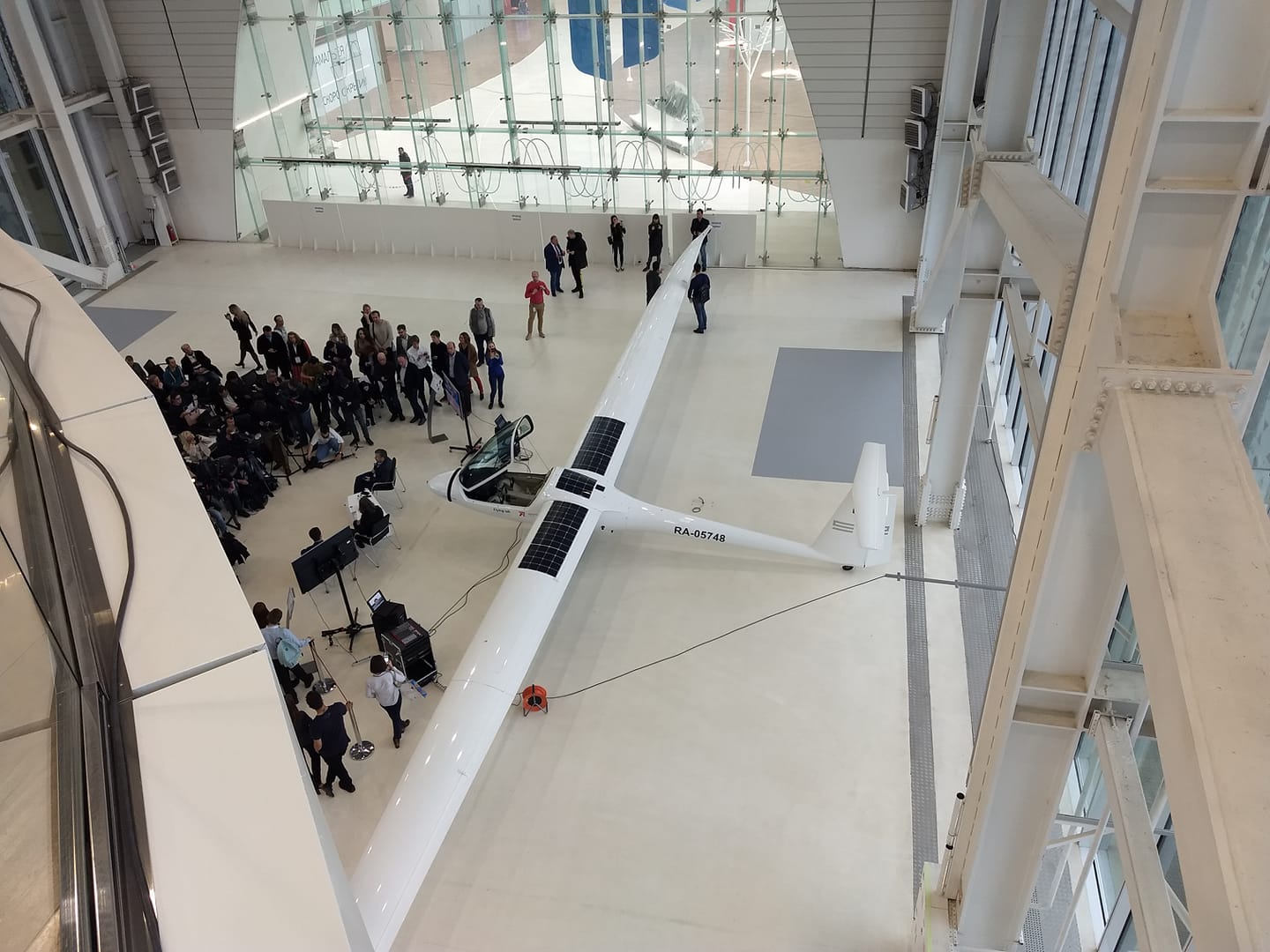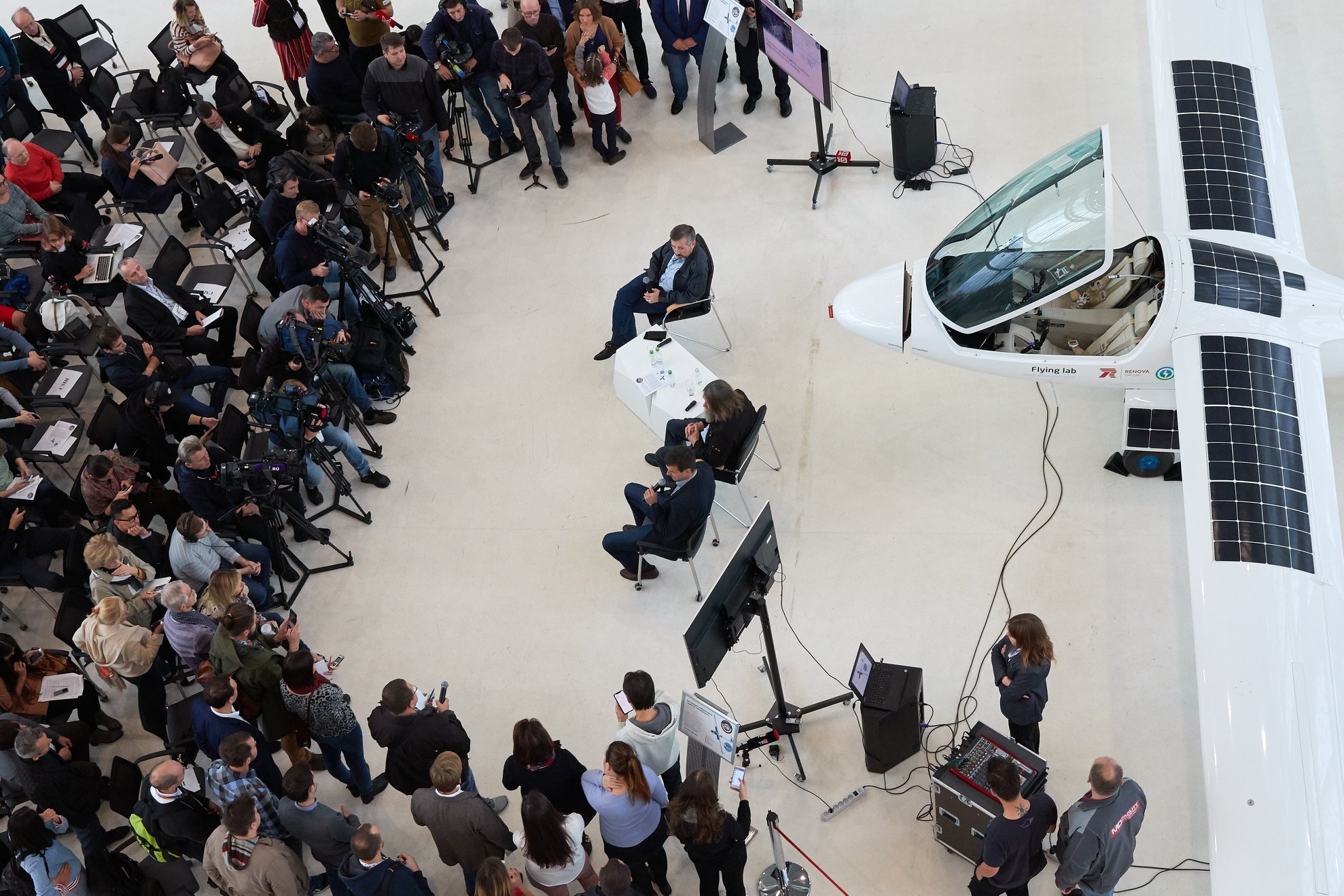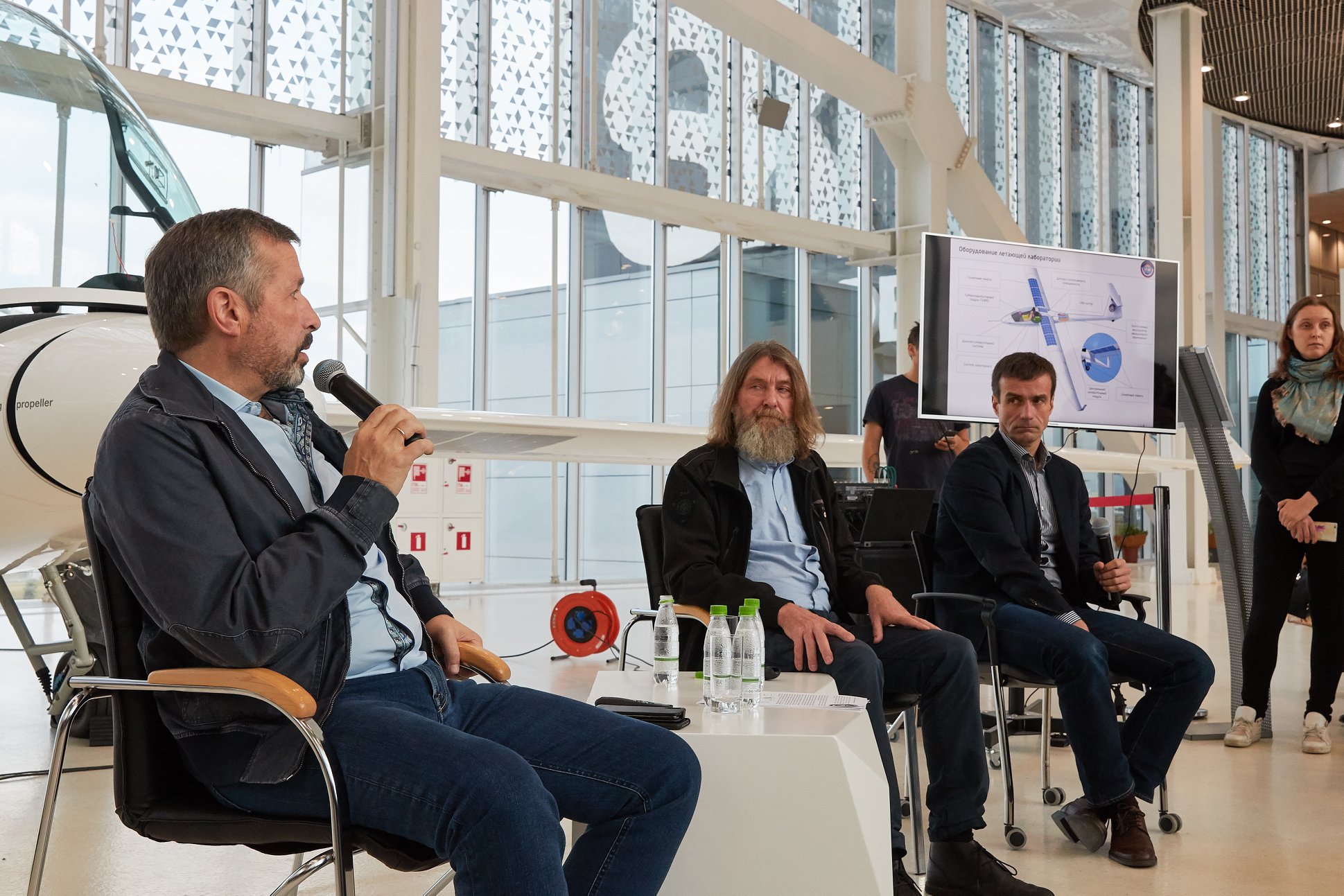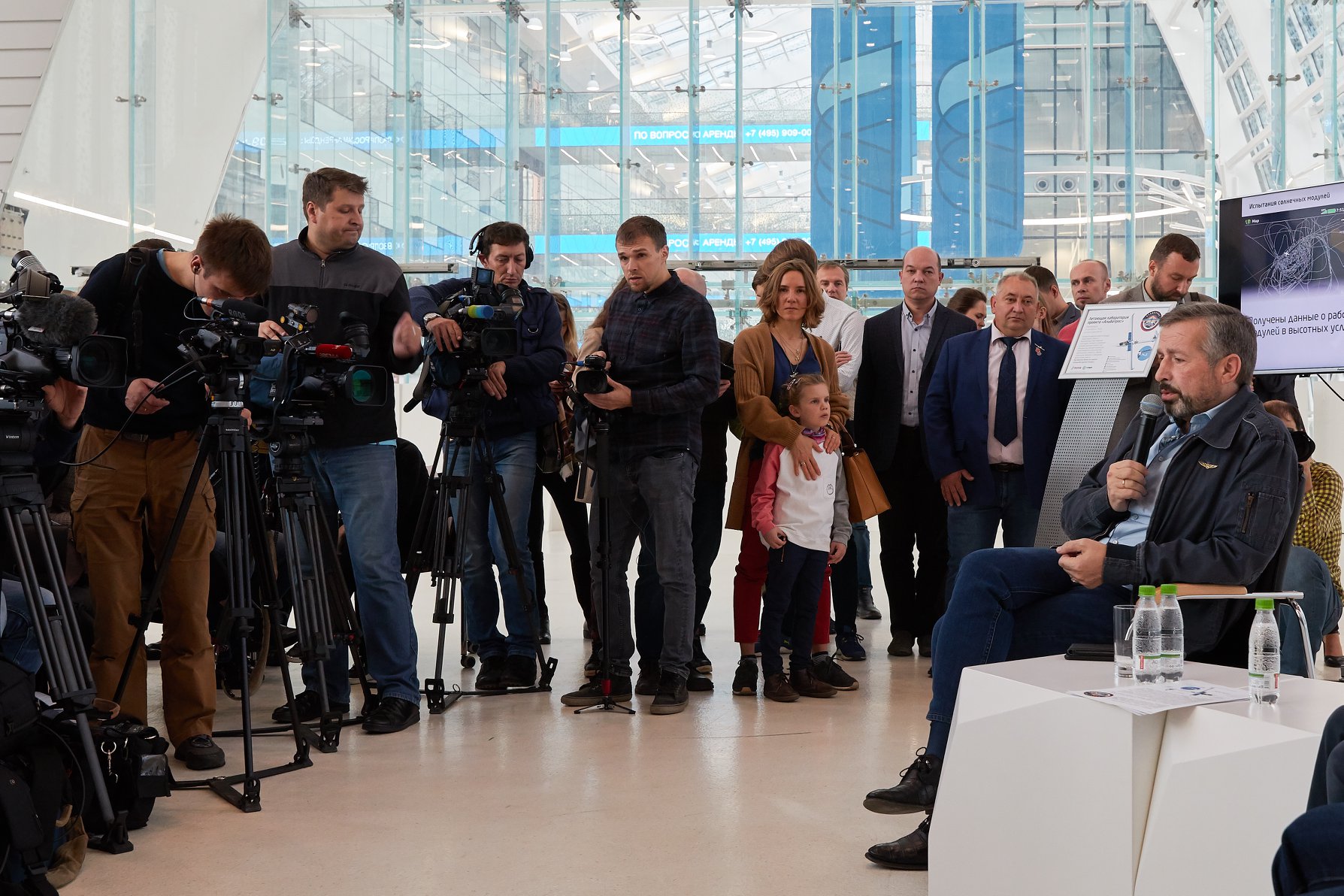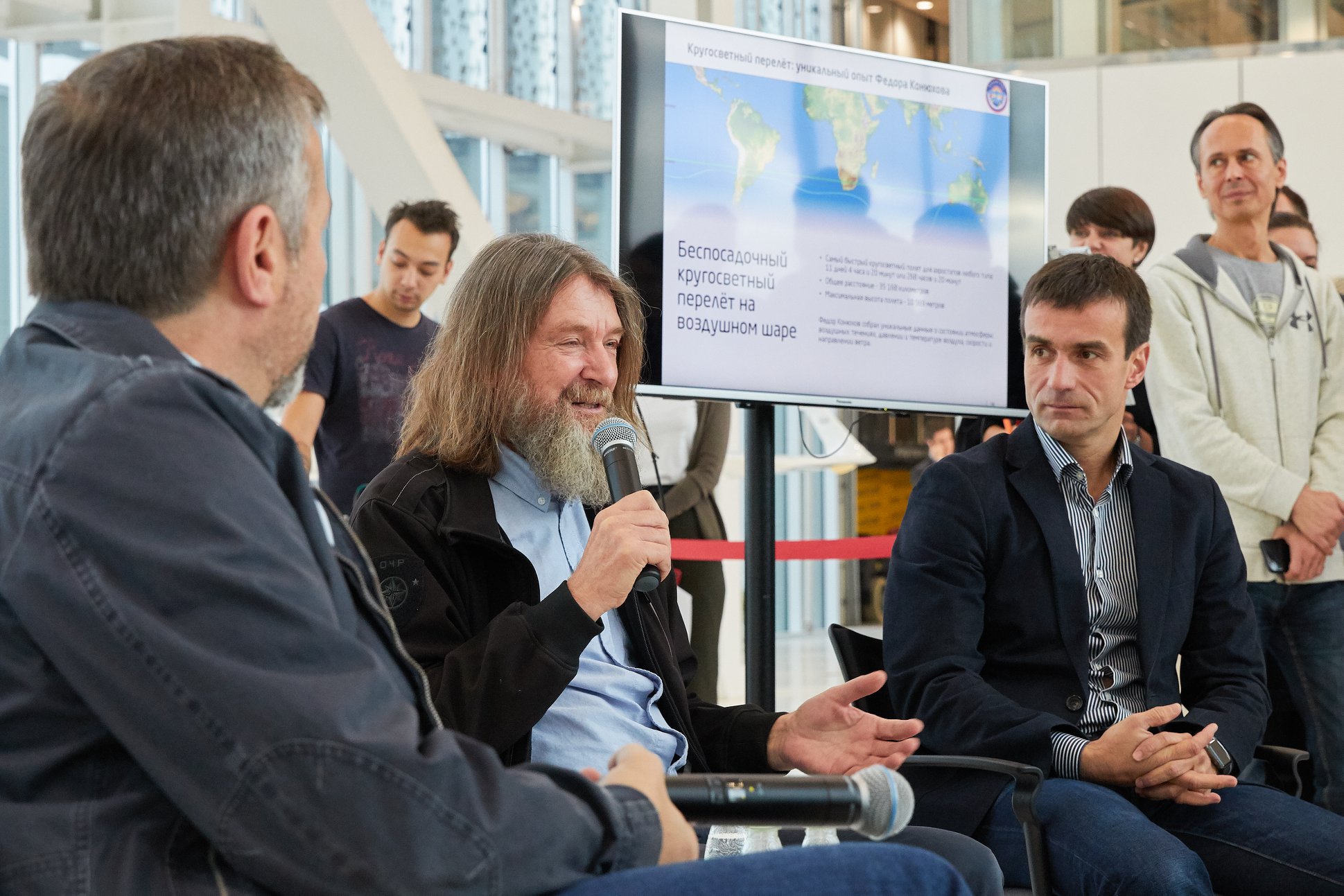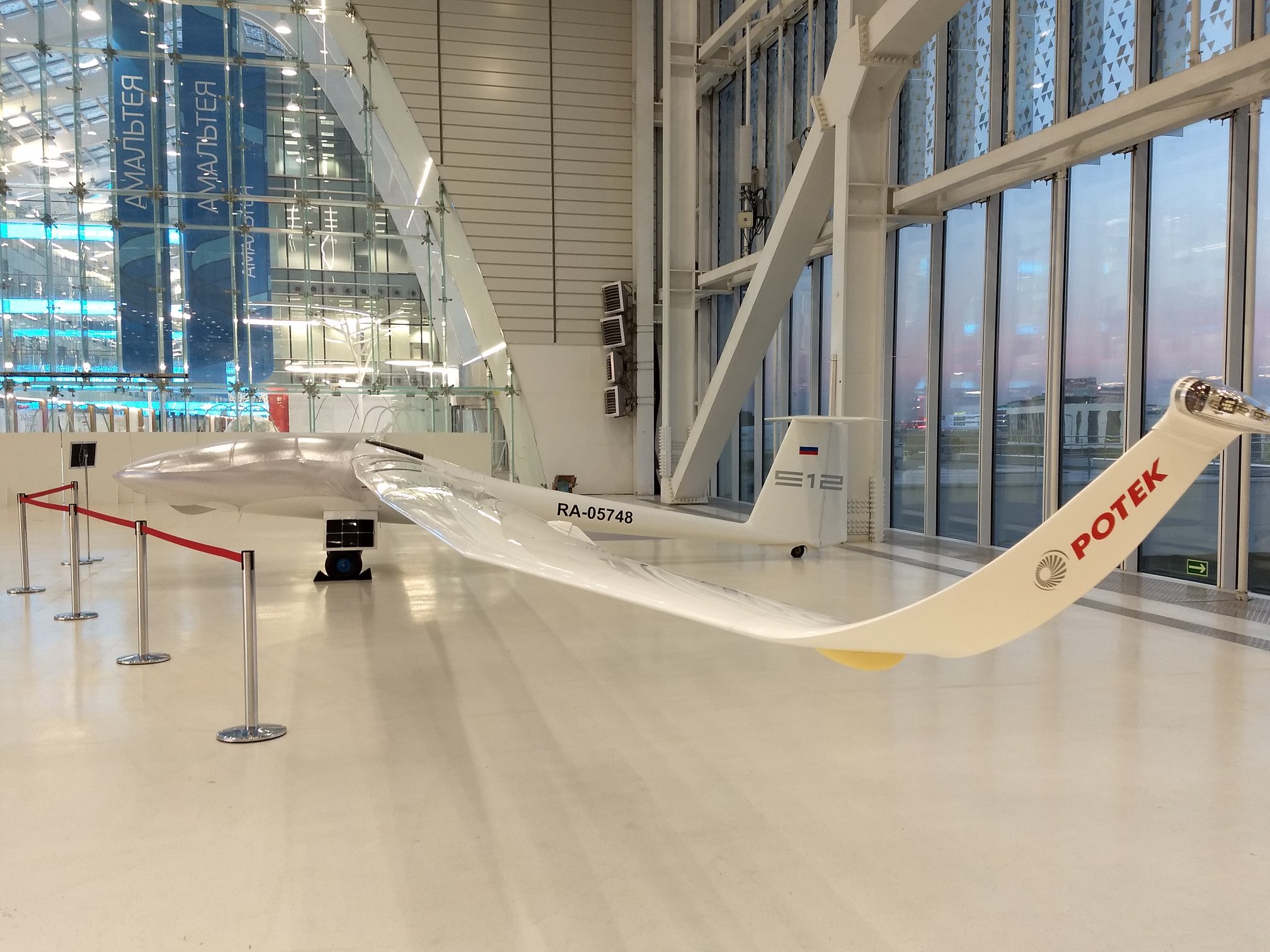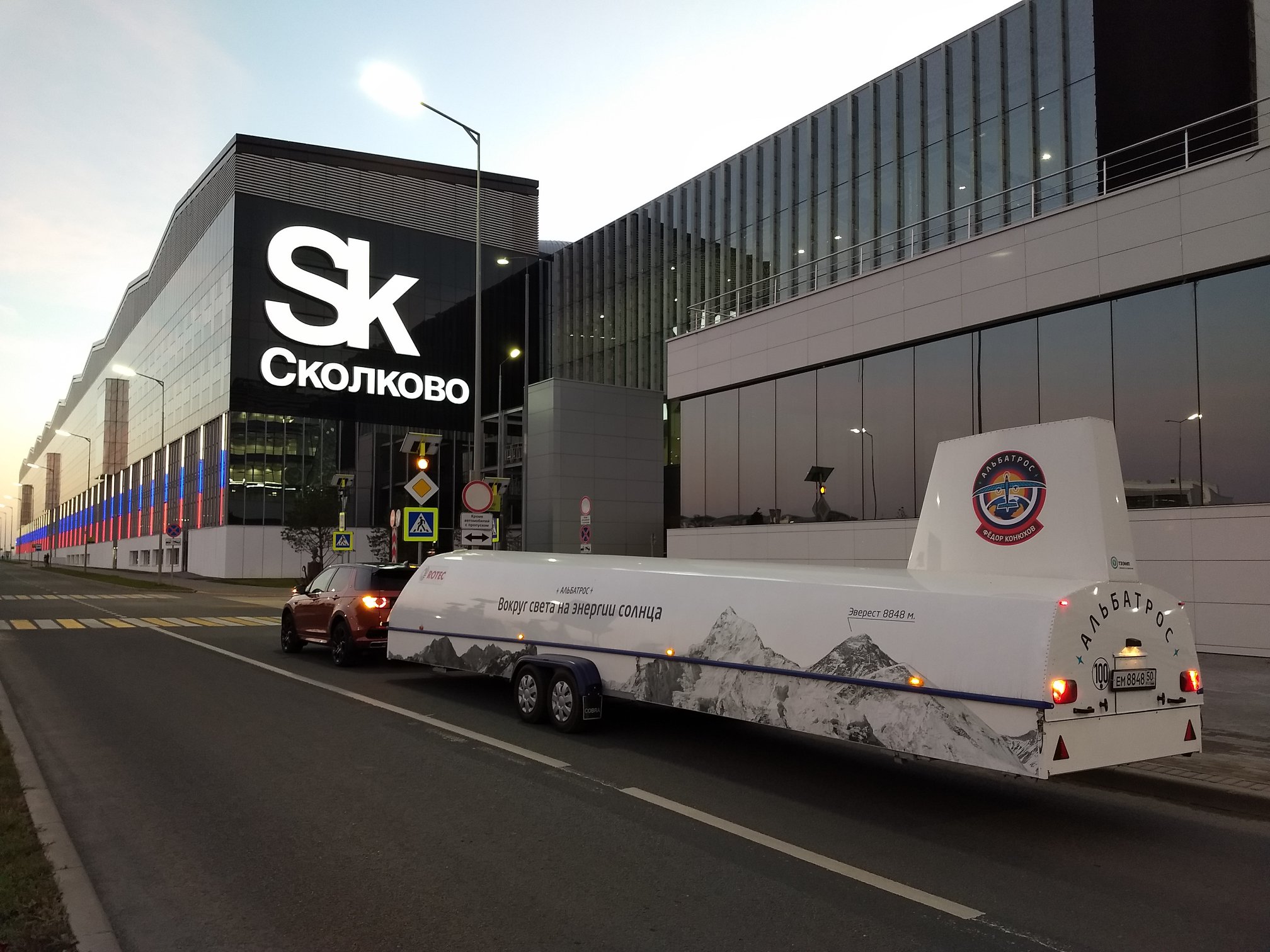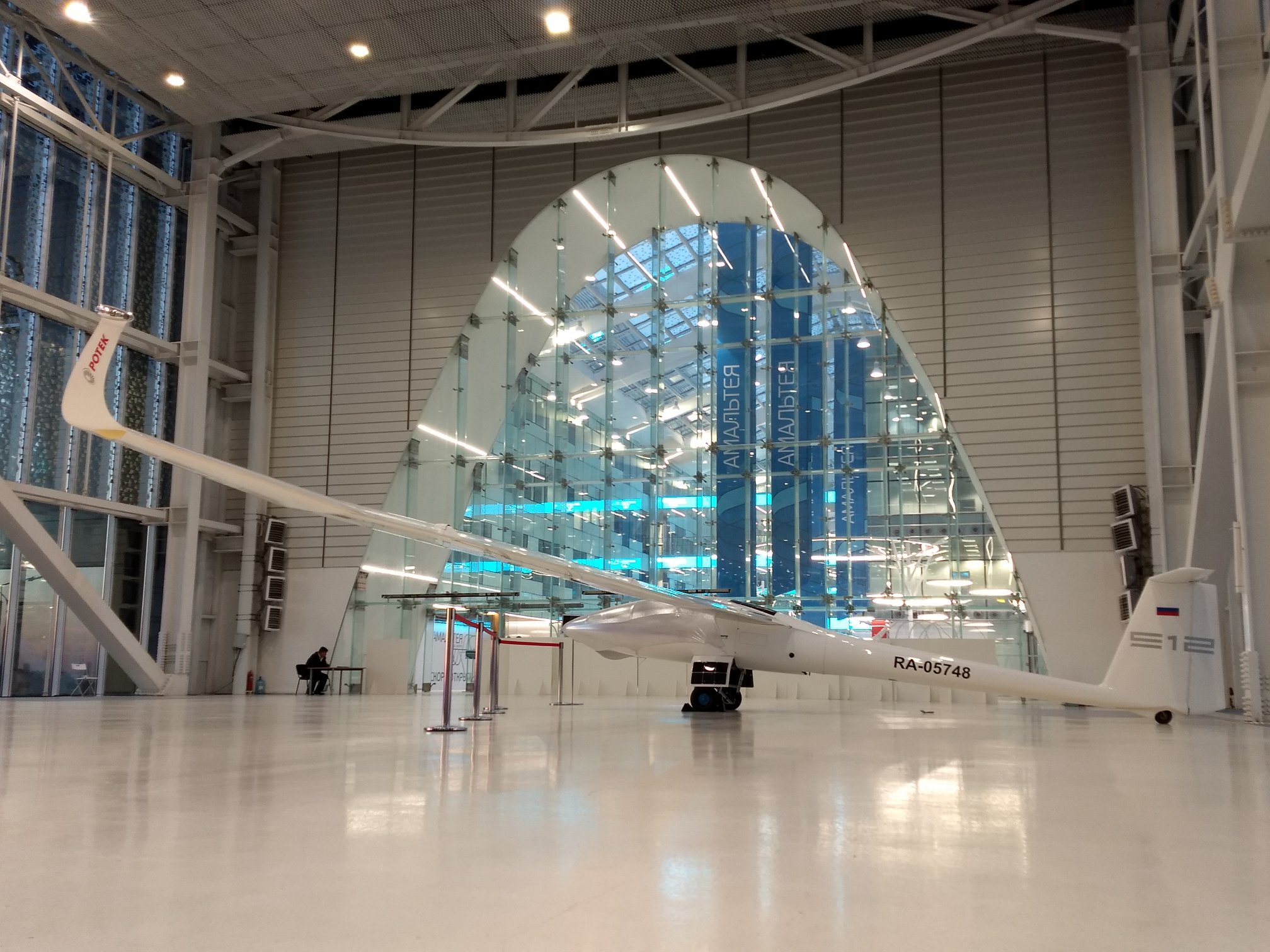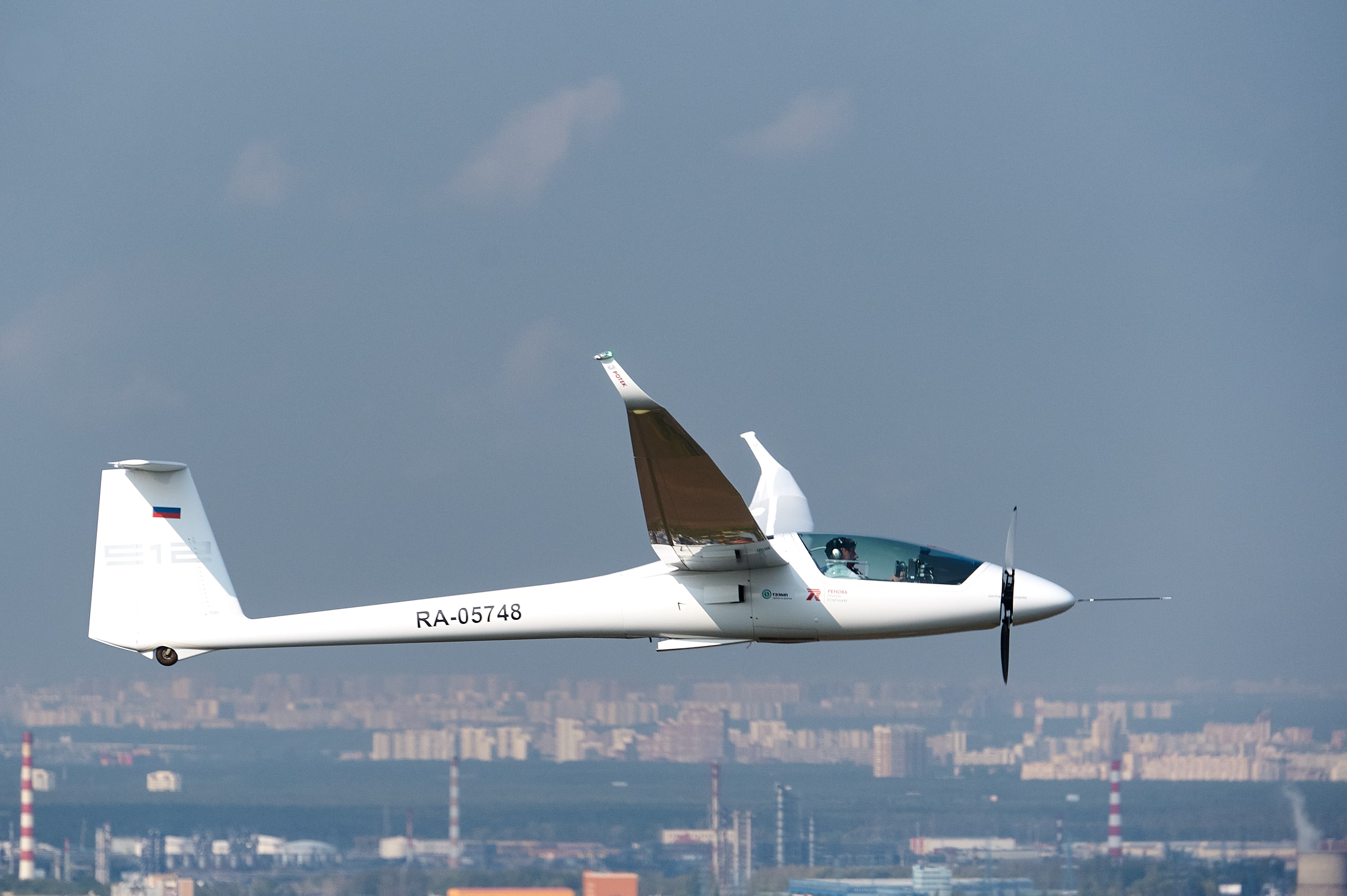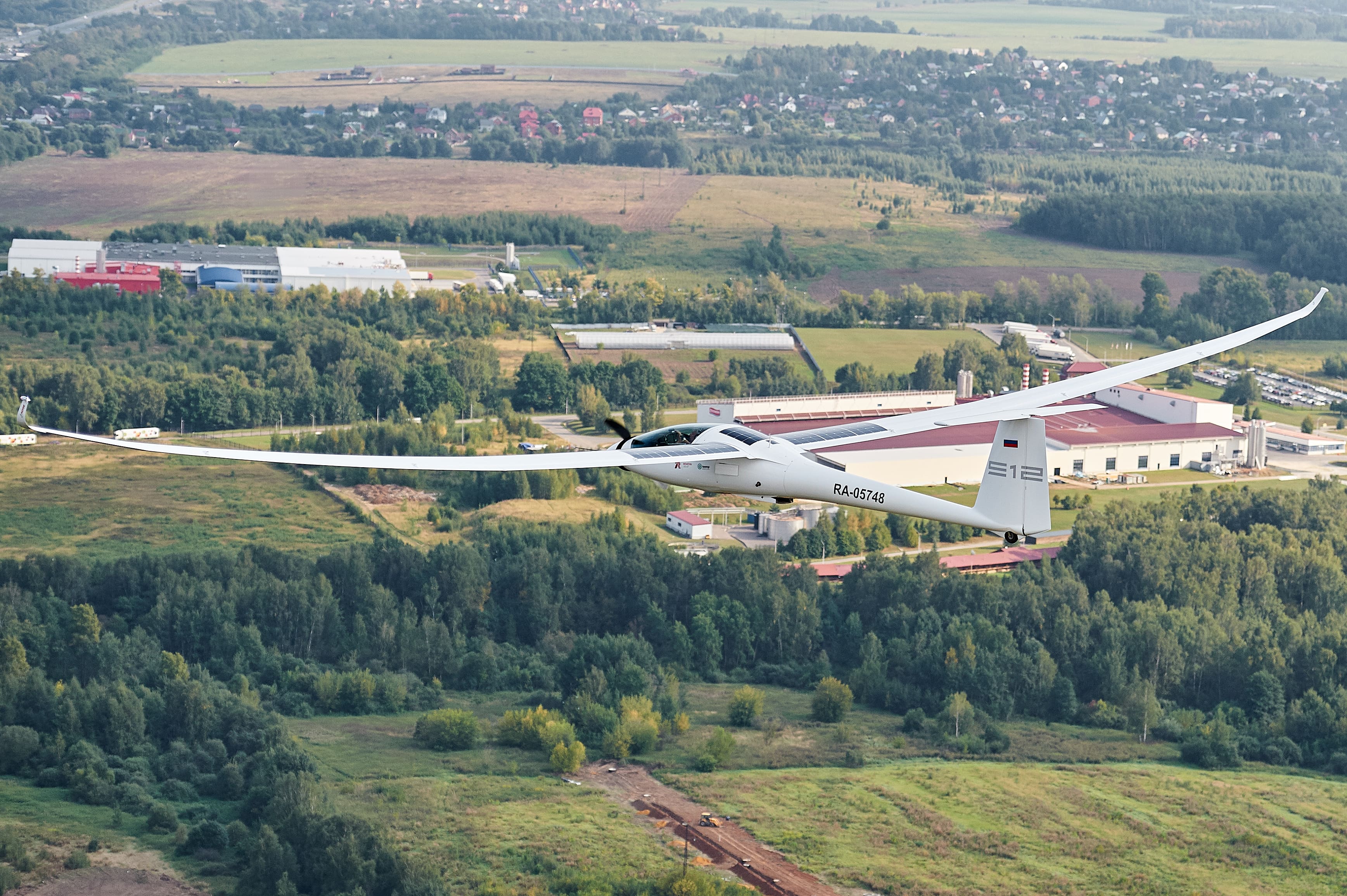Mikhail Lifshits and Fedor Konyukhov presented the “Albatross” project – flying around the world on the energy of the sun
On 25 October 2018 in the “Skolkovo” Technopark, a presentation of the Albatross project took place. The aim of the project is to design and build an airplane with an electric power plant capable of using solar energy to conclude a non-stop flight around the Earth. The project was presented by its leader Mikhail Lifshits and Russian adventurer Fedor Konyukhov. Flexible solar panels and the hybrid energy storage system for the aircraft were developed by a “Skolkovo” resident – the “TEEMP” company.
The partners of the “Albatross” project are planning the world’s first nonstop round-the-world flight on solar energy in 2020. They have already built the world’s first flying laboratory in the field of photovoltaics – a method of generating electricity through the use of solar cells converting solar energy into electricity. This flying laboratory will serve as a prototype for the construction of the solar-powered aircraft capable of flying around the world non-stop. The flying laboratory presented today at Skolkovo will collect unique data on the operation of solar modules and a hybrid power plant based on supercapacitors and lithium-ion batteries during its experimental flights in various climatic zones of Russia.
The partners of the project are the Chairman of the Boards of Directors of JSC “ROTEC” and LLC “TEEMP” Mikhail Lifshits and a writer, artist, and a famous Russian adventurer Fedor Konyukhov, who previously flew around the Earth on a balloon. Fedor will be the pilot of the solar-powered aircraft, which will make a bid for a record flight around the Earth.
Mikhail Lifshits, Chairman of the Board of Directors of JSC “ROTEC” and the head of the “Albatross” Project said: “A round-the-world flight on solar energy is an ambitious task, on the way to which we will develop a whole range of technological solutions. And the world’s first flying laboratory in the field of photovoltaics is the most important stage in this process. There is a question of how much energy can we collect on the surface of an aircraft in its different positions relative to the sun, in different latitudes and at different times of the day, and in different conditions of the surface of the planet below. There are no answers to these questions that are based on systematic scientific experiments. To design the plane correctly, you need to have a calculation base. For this we had built our flying laboratory; this stage of our project is already unique in itself.”
Fedor Konyukhov, adventurer and pilot of the “Albatross” project, said: “The sky, the fifth ocean, is conquered by the most skillful, so the round-the-world flight is not an easy task even for an experienced pilot. We are planning test flights in the Moscow region, Elbrus region and other regions of Russia, which will allow me to gain the necessary experience of piloting and conduct testing of the equipment. We have a lot of work ahead! ”
The resident of “Skolkovo”, the company “TEEMP”, has developed flexible solar modules and a hybrid power plant based on lithium-ion batteries and super-capacitors of its own production as part of the project.
Sergey Kurilov, General Director of “TEEMP”: “Flexible solar modules with an efficiency coefficient of more than 22% are able to capture both direct and reflected sunlight. The flying laboratory is equipped with such modules only. In addition, we are testing high-performance hybrid energy storage devices based on lithium-ion batteries and super-capacitors “TEEMP.” And as a result of this work, we will develop the technology to create an electric power unit for various applications – from autonomous aircrafts to robotics.”
Oleg Dubnov, Vice-President and the Executive Director of the “Skolkovo” Foundation’s energy-efficient technologies cluster: “Such an ambitious project, like a round-the-world flight on an innovative aircraft, could only be born in a very cohesive team of dedicated and enthusiastic professionals. It is all the more pleasant to note that it could not have happened without “Skolkovo”, which has become a platform for meeting and interaction for such different and bright people. It is important to note that the “Albatross” project is based on developments previously supported by the “Skolkovo” Foundation. “TEEMP” electricity storage devices and the innovative high-performance solar panels – were, not long ago, only an idea that appeared on the sites “Skolkovo”. And presently these are ready-made, competitive products that are in demand in traditional markets in the energy and transport sectors, both in Russia and abroad. The “Albatross” project is important for promoting innovative products, promoting green technologies. In the future, we see the aircraft “Albatross” itself as an independent product for the markets, that can be of interest to such global giants as Google and Amazon that are looking for platforms to provide services “from the air”.”
The flying laboratory, presented in “Skolkovo”, was created on the platform of the Stemme S12 aircraft and has the following characteristics:
Flexible solar modules are installed on the upper and lower surfaces of the wing, on the caps of the chassis and the upper part of the fuselage of the flying laboratory. The aircraft also has a super-capacitor energy storage device that protects lithium-ion batteries from increased loads, premature wear and heat acceleration. An electric heater is installed in the cockpit as a test load of electricity, which allows to maintain a comfortable temperature inside the aircraft during long flights at high altitudes.
It is assumed that the round-the-world flight will take place at altitudes of 12-14 km, the average speed will be 210 km / h. The plane will fly 35 thousand km in 150 hours and fly over the territories of Australia, New Zealand, Chile, Argentina, Brazil and South Africa. 80% of the flight will take place over the waters of the Pacific, Atlantic and Indian oceans.
Successful realisation of the project will be an incentive for the development of new aviation, based on the electrical systems of motion. The technologies developed in the course of the project will allow the creation, in particular, of autonomous aircraft (“atmospheric satellites”). They can be used to organize communication networks, high-quality imaging of the earth’s surface, monitoring forests, agricultural lands, pipeline systems and other infrastructure facilities.
The website of the project “Albatross”: http://albatross.solar
